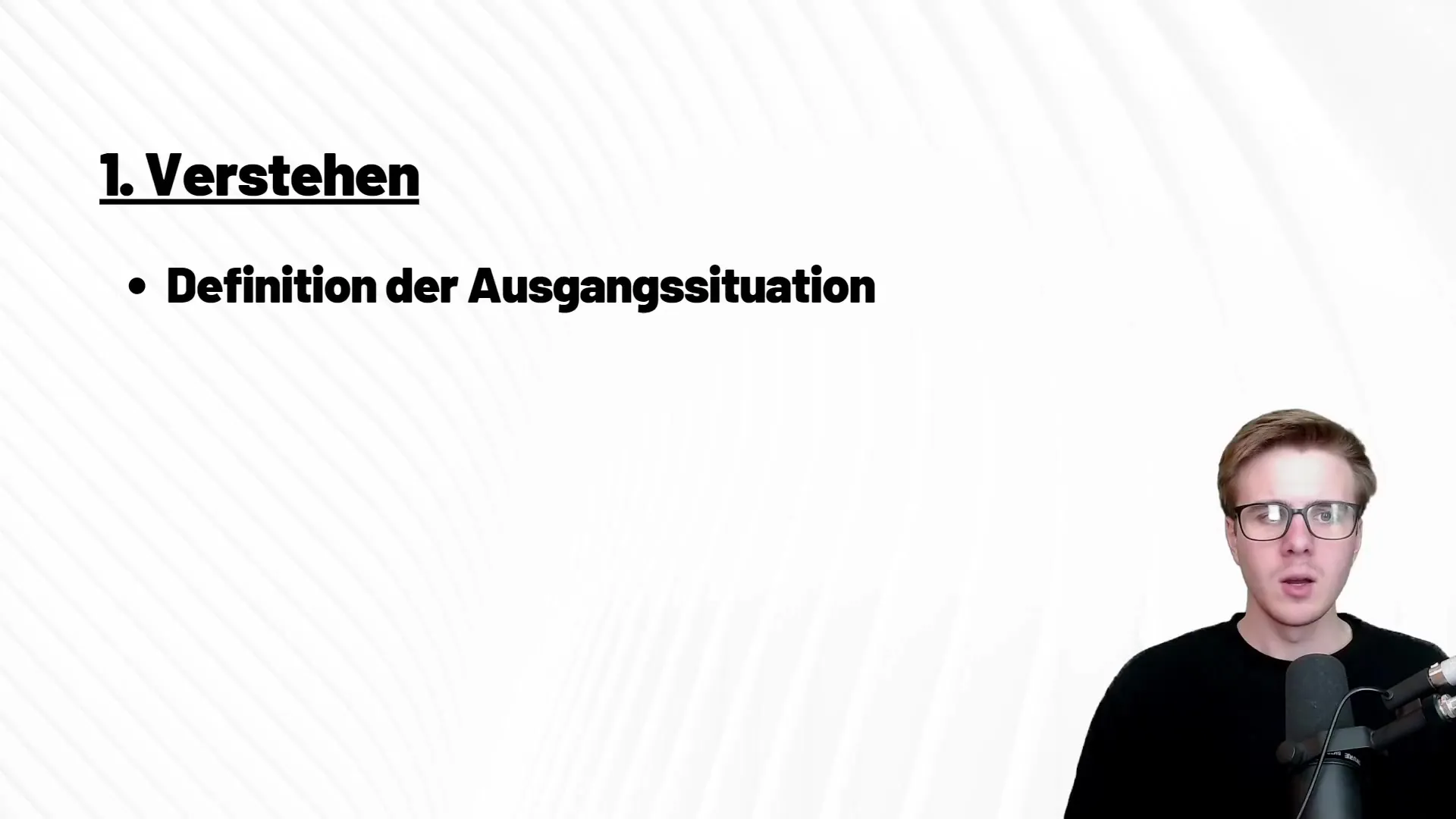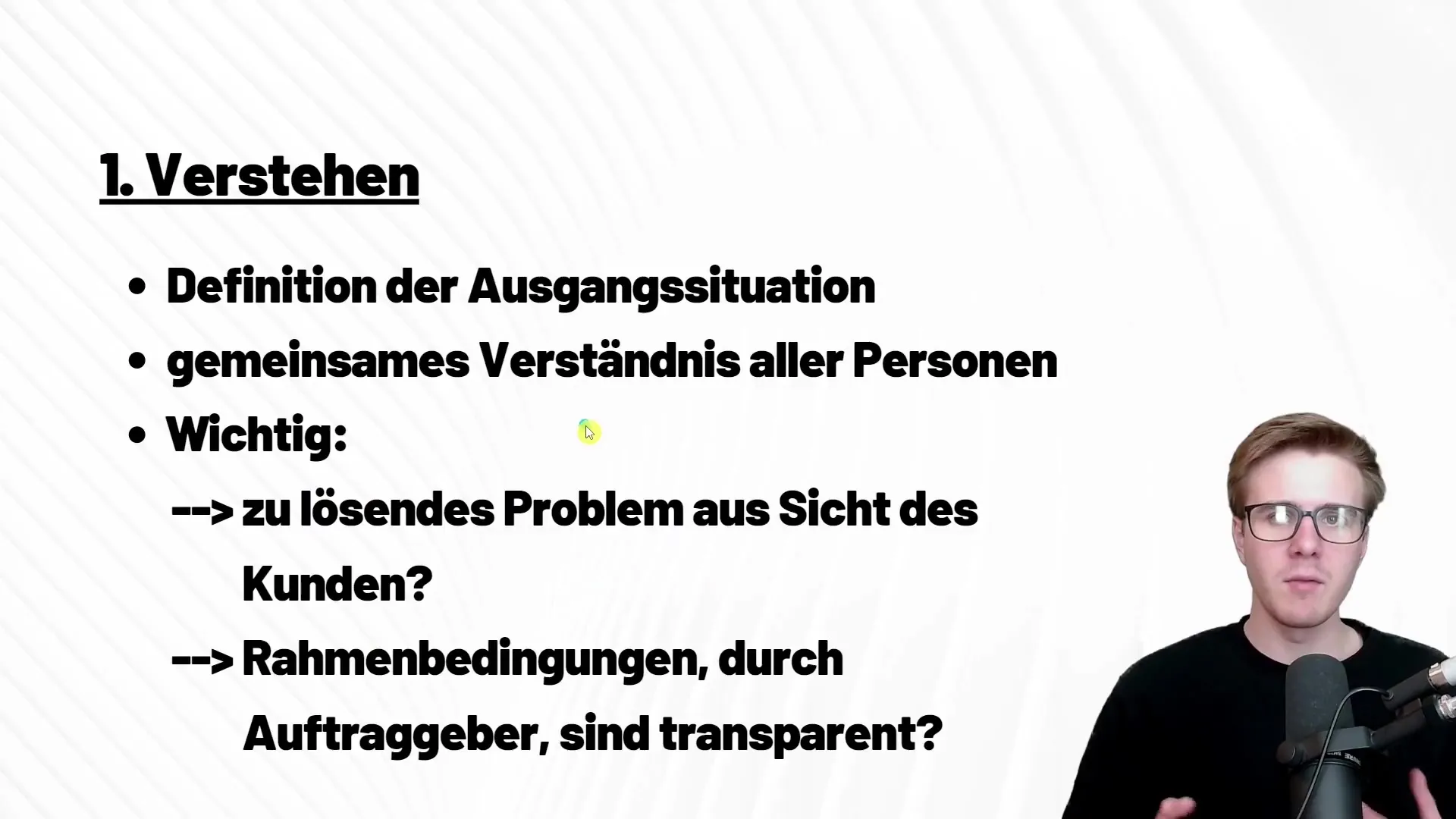In the world of Design Thinking, the first step is crucial. It forms the foundation for any further progress in the creative process. The focus here is on "Understanding," and it is essential to clearly define the needs of customers and end users. Through this structured guide, you will learn how to effectively carry out this phase to ensure that you transition to the next steps with a clear goal and a deeper understanding.
Key Insights
- Understanding the initial situation and the needs of the customer is essential.
- Clear communication and collaboration among all stakeholders are necessary.
- It is important to analyze both the problem statements and the framework precisely.
Step-by-Step Guide
Step 1: Analyze the initial situation
The first step in Design Thinking is to thoroughly understand the initial situation. You start by having conversations with the customer or client to learn more about the current situation. It is important to ask open-ended questions and actively listen to gather relevant information. You should find out how the existing product is currently being used and what challenges or problems arise.

Step 2: Identify the needs of the end user
In addition to direct interaction with the customer, it is equally important to analyze the needs of end users. Surveys, interviews, or user tests can help gain deeper insights into expectations and requirements. The goal is to develop a good sense of the users' wants and problems to design future solutions systematically.

Step 3: Establish transparent framework conditions
To ensure successful collaboration on your project, framework conditions should be clearly defined and transparent. This includes aspects like budget, timeframe, and resources. It is important that all stakeholders – from the customer to team members – are informed about this information. This way, it can be ensured that everyone is on the same page and working together towards the goals.
Step 4: Deepen problem understanding
After capturing the initial situation and framework conditions, it is crucial to understand the problem to be solved. Ask yourself questions like: Is the problem actually solvable from the customer's perspective? What previous solutions were attempted and why might they not have worked? The aim is to develop a profound understanding of the problematic aspects.
Step 5: Analyze customer needs and benefits
Next, it is important to identify specific customer needs. What requirements and desires does the customer have for the desired product or solution? Ensure that you also focus on the benefits that the customer wants to achieve through the solution in the end. Without a clear understanding of these needs, it will be difficult to develop effective solutions that are genuinely accepted.

Step 6: Create a shared understanding
The final point of this initial phase is to create a shared understanding of the project. This means that all stakeholders – both customers and team members – share the same vision and goal. Hold regular meetings to ensure that everyone is up to date and clarify any uncertainties. Only then can successful collaboration be ensured.
Summary
The first step in the Design Thinking process requires in-depth understanding and communication. By carefully analyzing the initial situation, user needs, and framework conditions, you lay the groundwork for a successful solution. Make sure to create a shared understanding within the team to proceed enthusiastically to the next steps.
Frequently Asked Questions
How do I identify user needs?By conducting interviews, surveys, or user tests, you can capture the needs and desires of users.
Why are framework conditions important?They provide clear guidelines for budget, time, and resources, making collaboration easier.
How important is understanding the problem?Without a deep understanding of the problem, it is nearly impossible to develop a meaningful solution.
How can I create a shared understanding within the team?Regular meetings and open communication help avoid misunderstandings and keep everyone on the same page.


